How "the key to Berlin" became Russian
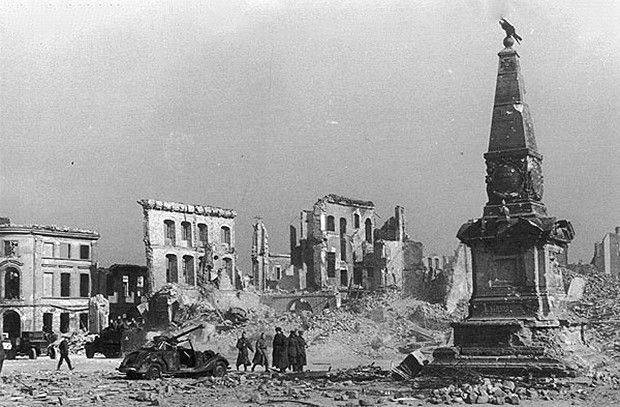
Storm of Kystrin fortress in 1945
One of the oldest fortresses in Germany - the city of Küstrin - during the years of the Great Patriotic War was rightly called the “key to Berlin”. There is no exaggeration here - through this oldest fortress on the Oder River, I went straight to the capital of the Third Reich. During the final phase of the Soviet-German confrontation in 1945, the Küstrin fortress acquired operational importance for both opponents, since, located between the Oder and the Warta, the main waterways of East Germany, it covered the main crossings over these rivers.
В stories The Great Patriotic War, the storming of the Kustrin fortress by Soviet troops is an example of a well-planned and planned front-line operation. Despite intensive battles, the total losses of the Soviet troops during the defeat of the Kystrin defense knot turned out to be relatively small. The capture of Kustrin was carried out by a relatively small contingent of Soviet troops, who nevertheless confidently coped with the tasks.
The oldest fortress is Pomorian
The Kustrin was founded by the West Slavic tribes of the Pomoryan who inhabited up to the 16th – 17th centuries. the lower reaches and the mouth of the river Oder. From the end of the XII century on the lands of Pomerania (Pomerania in Slavonic) German colonization began to be felt more and more strongly, which gradually turned into a tense struggle of the Germans and Poles over the territory of the Baltic Pomerania. By the beginning of the 16th century, the Germans were firmly entrenched in the Warth-Oder interfluve, and in 1536, the Elector of Brandenburg (Slavonic Branibor) Joachim Hector laid a fortress here. The purpose of the construction is clear: the Germans wanted to maintain their permanent control over the strategically important area of confluence of the Oder and the Warta.
The military history of Kustrin before the period of the Second World War was very intense. Several important events in the life of the creator of the powerful Prussian state, King Frederick the Great, are connected with the Küstrin citadel. During the Seven Years War, in 1758, this fortress was besieged by the Russian army of General-in-chief V.V. Fermora. Later, Kustrin was taken by French troops of Napoleon Bonaparte, who then for almost a year successfully defended it from capture by the allied Prussian-Russian troops. Military conflicts of the First World War bypassed Kustrin party, although they contributed to the powerful fortification construction in the citadel.
The strategic importance of the Küstrin fortress in the 40s of the 20th century is fully preserved. It housed a powerful railway junction, connecting seven different railway directions. The most important road of East Germany, Reichstrasse No. XXUMX, passed through Kustrin to Berlin.
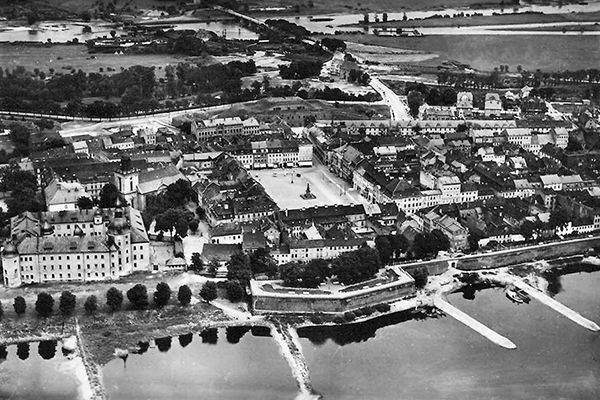
Forces and means of the German garrison
The newest part of the city, the so-called Neustadt, was of major defensive importance in the Küstrin junction. There were a large number of powerful stone buildings with a wall thickness up to 1 meters, some of these buildings for military purposes had extensive basement rooms. In January and February 1945, the German troops erected quite powerful field fortifications along the perimeter of Neustadt. The total depth of the Neustadt defense reached 3 km and included four lines of full profile trenches reinforced at the hub parts with special bastions. The second lane of Neustadt’s defense was based on the city suburbs buildings specially prepared for battles.
The civilian population from Kustrin was evacuated - only volunteers remained in the city, who expressed a desire to help the soldiers of the German army, as well as the formation of the folkkurt (people's militia).
The total strength of the Kustrin garrison was about 16 800 people, of whom a significant part was in auxiliary formations and folkkturm. After the capture of the fortress by Soviet troops on captured German documents, it was found that the number of army units within the city limits of Kustrin reached 9 750 people.
Garrison armament was formed from 280 machine guns, 90 guns (from the caliber 77 mm and larger), 50 mortars, 10 six-barreled mortar guns, 25 assault guns. In addition, the Wehrmacht heavy artillery supported the defense of the city, which fired from behind the Oder. This artillery numbered about 100 trunks, including the powerful Bruno X-280 X-rail guns of the Bruno series. The design of the "Bruno" allowed accurate shelling at distances over 5 km, throwing high-explosive projectile weighing about 60 kg. The newest K-120 series “Shlanke Berta” (“Slender Berta”) could throw an active-high-explosive high-explosive projectile weighing 5 kg over a distance of more than 248 km.
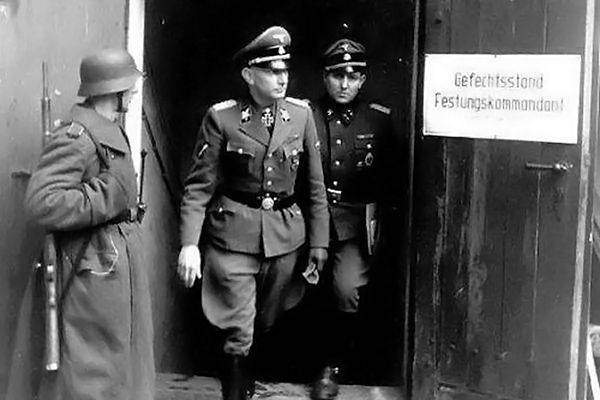
The direct command of the field defense of Kystrin was carried out by Colonel of the Gendarmerie Franz Walter. He was subordinate to the appointed 2 February 1945, the commandant of the fortress, Lieutenant-General of the SS forces Heinz-Friedrich Reinefart. For the suppression of the Polish Warsaw Uprising in August-September 1944, General Reinefart was awarded the Knight's Cross with oak leaves. General Heinz Guderian, who led the German General Staff during the days of Küstrin’s defense, did not appreciate the leadership abilities of SS Reinfart. "Heinz-hurricane," as one of the Blitzkrieg theorists was called in the Wehrmacht, considered Reinephart "a good police official, but not a general."
Tasks and forces of the Soviet troops
The Soviet command was clearly aware that the German General Staff saw the main significance of the long-term defense of Küstrin in the maximum opposition to the functioning of the Soviet crossings on the Oder. The blocking of the most important railway line leading to Berlin was also considered a priority of the German defense. The order for the German 9 Army from the 12.02.1945 of the year, which was known at the headquarters of the 1 of the Belorussian Front, ordered to organize the defense of Kustrin so that even the last of the fighting groups would be able to prevent the construction of Soviet river crossings.
On the eve of the assault on Kustrin, the commander of the 5 th attack army of the 1 of the Belorussian Front, Lieutenant General N. E. Berzarin, held an operational meeting at his headquarters. It was decided to strike a short powerful blow to the center of the Küstrin defensive position and to capture the Neishtadt area within one day. This operation should have been carried out by the 295 and 416 rifle divisions of the 32 rifle corps of General D. S. Zherebin. The overall design of the operation was agreed upon and received the approval of the commander of the 1 Belorussian Front, Marshal G. K. Zhukov.
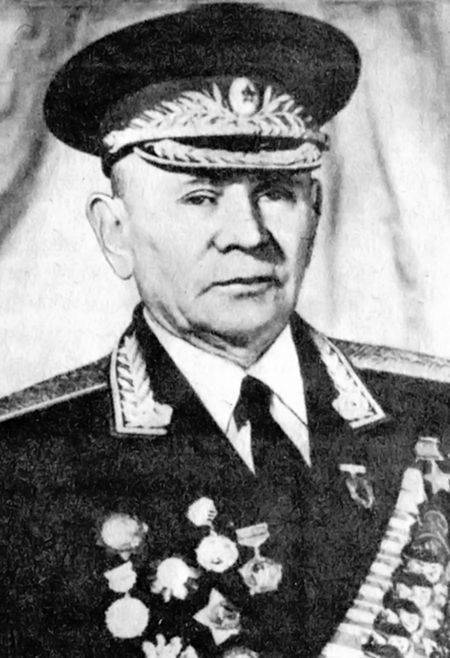
“The task of the 32 rifle corps,” writes the modern Russian historian A.V. Isaev - it was impossible to call it trivial. He was to take a fortress, the garrison of which was quite comparable in number with the forces of the attackers. As of 5 March, 1945 of the 295 Infantry Division consisted of 5323 man, in two regiments of the 416 Infantry Division - 3300 man, and finally, 123, 213 and 360 of separate army penal companies were 311 man . Thus, the balance of forces in the infantry battalions between the assault troops and the Neustadt garrison amounted to all 1,3: 1 in favor of the Soviet troops. ”
The military assets attached to the assault troops were also not of a significant scale. The attack on Kustrin was supported by 10 regiments of artillery and two tank regiment, which had a very modest composition of armored vehicles: 8 units of heavy tanks IS-2, 19 units of the famous T-34, fifteen "bitches" - 76-mm self-propelled guns Su-76. Really effective support for the Soviet troops advancing on Kustrin was the 32nd division of the most powerful 280-mm siege mortars Br-5, as well as 18 guns of the 203-mm B-4 howitzers (model 1931).
The plan of the operation and organization of assault groups
The main attack on Neystadt - the center of the Küstrin defense center - was to be inflicted on the 2,2 km front by two rifle regiments of the 295 th rifle division of General A.P. Dorofeyev followed by a rapid breakthrough to the railway bridges across the Warta river. The task of this breakthrough (except for seizing bridges) was to cut off the Neustadt garrison from the main forces of the German 9 Army. The initial success of the offensive was supposed to be developed by introducing into the breakthrough two regiments of the 416 Infantry Division, which were supposed to complete the clearing of the city from the remnants of the German troops.
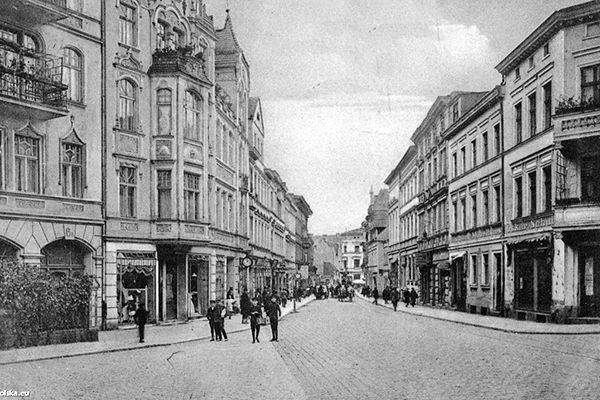
A decisive assault on the main line had to be preceded by two distractions, which inflicted 123, 360 and 213-I separate army penalty companies of 5-th shock army. These divisions were commanded by captains I. I. Mishunin, P. I. Groiser and V. S. Vishnyakov respectively. One part of the penal divisions should have landed across the Warta River near the southern outskirts of Kustrin, while another part of the “penalty box” - imitated the beginning of the assault in the suburb of Varnik. Here, at Varnik, two hours before the general attack of Küstrin, a powerful fire raid was planned with the subsequent frontal attack of the fighter units.
According to the unanimous opinion of all military experts, the strong point of the assault operation conceived at the headquarters of the 5th shock army was the attraction of a significant potential of technical means of combat: heavy artillery, armored vehicles and aviation. From the first minute of the operation, Neystadt’s fortifications were supposed to “process” the 122 mm M-30 howitzers (model 1938), the 152 mm M-10 howitzers (sample 1938) and the D-1 (sample 1943) , and also extremely effective in combat use of the 152-mm howitzer guns ML-20 (arr. 1937). The guns of these systems were part of ten artillery regiments, which were under the operational command of General N.E. Berzarin.
The most difficult fortification areas of the German defense were planning to destroy with fire six 280-mm mortars Br-5 (32-th separate artillery division) and eighteen 203-mm howitzers B-4 (124-I artillery brigade).
The Soviet offensive on Neustadt was supposed to provide air support for 3-th bomber air corps (Pe-2 dive bombers), 300-I assault air division (attack planes IL-2), 242-15 air night brigade, and unactors of the bomber air battleships (IL-2 attack aircraft), 13 airborne astronomy divisions (IL-XNUMX attack aircraft); and XNUMX th fighter air corps.
By order of the headquarters of the 5 shock army in the avant-garde 295 rifle division, 15 special assault groups were created. Each group consisted of a rifle company (30-40 fighters), two squadrons - sappers and flamethrowers, two anti-tank 45-mm cannons, two 76-mm guns (mainly ZIS-3 guns), one heavy tank EC-2 and two medium tanks T-34 tanks. According to expert sources, all formed assault groups before the attack on Kustrin underwent special training in combat coordination.
Additional, and very effective weapons The assault groups became captured German faust-cartridges, which were transferred in significant numbers to the 1038, 1040, and 1042 rifle regiments. Faustpatrony was supposed to be used not as a means of fighting German armored vehicles (it was not essentially in Neustadt), but as engineering munitions capable of burning through protective creeping defensive mechanisms of German pillboxes and other long-term defensive shelters. Special training in the combat use of faustprony passed about 590 fighters.
It is important to emphasize that the capture of the Küstrin fortress became for the 5 th shock army a kind of testing ground for working out the interaction of infantry units and armored vehicles during intense combat in urban environments. Ahead was the assault on Berlin - a complex, deeply echeloned defense center, and in this connection, the positive tactical experience of capturing Kustrin cannot be overestimated.
First day of surgery
The assault on Neustadt was planned for the early morning of March 6 1945. It should have been preceded by an attack by a small assault force, made up of specially selected soldiers and officers from 60. The landing party imitated the landing of a large assault group on the southern outskirts of Neustadt.
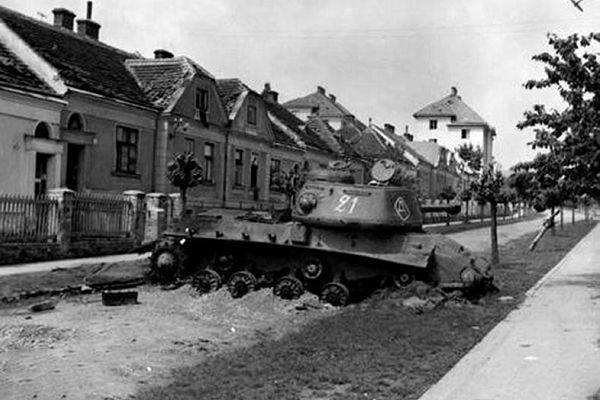
In 4.00, in the misty predawn gloom on 12, the landing boats began to descend down the Warta River. A landing on the German coast was planned at the confluence of the Warta and its old lady, the so-called Alte-Warta (Old Warta). However, it was not possible to pass covertly to the point of landing: the Germans noticed movement on the river and opened intensive fire on the boats from machine guns and anti-aircraft "Oerlikon". The landing force was forced to "pull over" under the eastern "Russian" shore, and the two boats were nevertheless sunk. The coming dawn and the German units brought to full combat readiness made further attempts to parachute suicide, obviously doomed to failure. Under these conditions, the Soviet command made a timely decision to return the personnel of the landing force to its units.
Equally unsuccessful was the attempt of 123, 360 and 213 of penal companies to seize the south-western outskirts of Kustrin - the Varnik region. The heavy fire of German machine guns and the use of jet mortars by the enemy led to significant losses in the ranks of the attackers, the “penalty box” lay down near 9.30, and then they were relegated to their original positions.
Wet fog, and then low clouds prevented 6 March massively apply assault and bomber aircraft. Taking into account all the factors listed above, the commander of the 5 th shock army, General N. E. Berzarin, decided to move the assault on Neustadt the next day.
7 March 1945, the weather really got much better: the rain ended, the sun appeared in the breaks of the clouds. In 11.00, the fiery Armageddon collapsed on the German defensive positions in Kustrin: bombing, assault, and even fighter aircraft began to “iron” almost the entire line of defense of Neustadt. In 11.20, after a powerful 20-minute artillery preparation, three penalty companies and one battalion of the 1042 rifle regiment, which had been assigned to reinforcement, rose to the attack. The “Penalties” went on the attack with incredible fury, the Germans defended themselves exceptionally steadfastly and therefore on the first foreign trench at Varnik a heavy encounter went on for more than three hours. Finally, penalty 123-I and 360-I companies managed to break the resistance of the Germans and firmly entrenched in the first trench of the enemy.
As soon as information about the seizure of the advanced line from Varnik entered the headquarters of the 5 shock army, an order was immediately given to launch artillery preparation in the direction of the main attack. In 13.00, an avalanche of artillery fell on the German defensive positions in the northwestern part of Neustadt.
The artillery preparation continued for 40 minutes, and ten minutes before its termination, the 295 and 416 divisions of the chemical defense company set up a thick smoke screen along the line of the Warta River. The creeping gray-brown smoke blocked German regiments of troops from the German artillery crews on the left bank of the Oder.
In 13.40, the rifle 1038 and 1040 regiments, supported by tanks, struck a powerful blow to the first line of defense at Neustadt. To 16.00, the first trench of the defensive line of the fortress was completely cleared of German soldiers. The second part of the German trench was also captured, part continued to fight, but the overall success of the breakthrough into the Kustrin fortress was quite clearly indicated. To support the offensive potential of the attacking units, General Berzarin gave the order to introduce into the breakthrough center two regiments of the 416 Infantry Division. This competent, timely decision predetermined the final, moreover, rapid collapse of the German defense in Neustadt. During the daily battle of 7 in March 1945, units of the 32 Corps completely cleared the enemy from the second trench of the defensive line and captured all the fortifications of the enemy to a depth of 2 km (with the 2,5 km offensive front).
By the evening of March 7, the fighting began in the city blocks of Neustadt, and due to the effective shooting of the enemy from solid stone buildings and bunkers, the advance of the Soviet troops slowed down dramatically. In general, the result of the 32 Infantry Corps offensive on the first day of the assault on Kustrin can be characterized as very successful.
In a number of works by modern historians, the consideration is expressed that the 5 shock army did not decide its main task on the first day of the assault on Kustrin — it failed to capture the bridges across the Oder, which were blown up by the Germans in a few days. This proposition can hardly be considered realistic, since only a very naive person could dream of capturing (at a ratio of 1,3: 1 forces) intact strategic bridges that are under complete control and deep in the defense of a strong, deeply motivated fight of the SS garrison. General Nikolai Berzarin - the future commandant of Berlin - did not belong to the category of naive people.
Fall of the Kustrin Fortress
Strengthening the enemy's fire resistance in the depths of the city quarters of Kustrin did not go unnoticed by the headquarters of the 5 shock army. On the night of March 8, a significant number of large-caliber guns (including several X-NUMX-mm B-203 howitzers) were advanced to the line of attack for direct fire.
In 9.00, with the direct support of large-caliber artillery, the 1368, 1040, and 1042 rifle regiments launched an offensive. German military formations were relatively quickly broken through, and the 1368 th regiment captured the city block in the area of the southern railway bridge across the Oder. At about the same time, the 1040 th regiment captured the Kustrin railway station and quickly began to break through to join up with penal companies, which were decisively storming the southeast quarters of Kustrin.
By the evening of March 8, the German group in Küstrin was cut in two, and the most numerous part of the garrison was surrounded on the eastern outskirts of Neustadt. The centralized command of the forces of the defending forces in the fortress collapsed. Colonel of field gendarmerie Franz Walter, like the commander of the garrison, a general “from the police” Reinefart, was unable to organize effective command and control of the troops. The lack of necessary tactical skills of the German command in the fortress led to a constant lag in decision-making in a rapidly changing combat situation. This, in turn, led to the fact that the Neystadt garrison was completely cut off by Soviet units from the main forces of the XI SS corps.
In the next three days of the operation - 9, 10 and 11 of March - the planned destruction of the surrounded enemy grouping took place. The Germans resisted very stubbornly, at times turning into violent counterattacks, but the encirclement ring shrank steadily, leaving the Neystadt garrison no chance for a de-blockade.
By the end of 11 in March, the garrison of Kustrin with difficulty kept only one northern fort of the fortress and the area of the Stolpnagel military barracks. On the night of March 12, the remnants of the garrison units made a desperate attempt to escape from the city, delivering a massive blow in a southerly direction along the Neustadt-Zorndorf railway line. This attempt to break through was virtually bogged down in German blood: Soviet guns set in direct fire with every volley punched all the big gaps in the German battle formations.
On the morning of March 12, the agony of the German garrison came: under the cover of a powerful rampart, Soviet troops launched an assault on the Stolpnagel barracks. German soldiers, especially SS members, fought with the inflexible resistance of the obviously doomed. The assault on the barracks, which began in the morning on 5.00, only towards 11.00, that is, after six hours of intense fighting, began to lean toward the victory of Soviet weapons. It was only by 15.00 12 in March that it was possible to crush the resistance of German soldiers fighting in the ruins of Stolnnagel. The last center of the SS defense in Neustadt-forte was liquidated only in the evening.
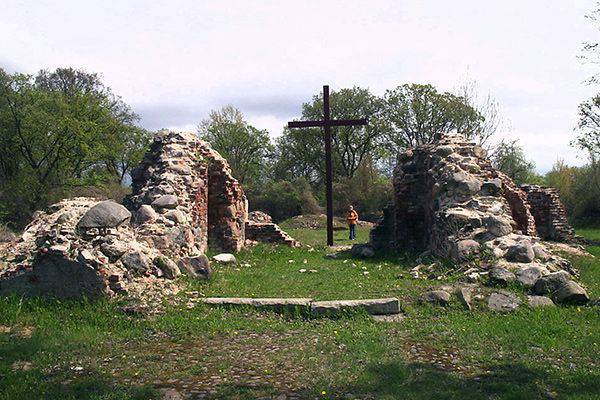
Military sources estimate German losses in the defense of Neustadt at 3500 people killed and about 3600 prisoners. Soviet losses are regarded as moderate. Historian A.V. Isaev points out, for example, that the personnel of the 295 Infantry Division decreased by March 13 1945 from 5323 to 4779 fighters. The total losses of the 416 Infantry Division reduced the personnel of this unit from 5543 to 5082 fighters.
Thus, the total combat losses (i.e., killed, wounded, missing) of the 32 Infantry Corps amounted to between 28 February and 13 in March, around 1005 people. Given the intense, often oncoming battles in the Kustrin fortress, such losses of the Soviet troops look, indeed, very moderate, but, frankly, unconvincing. However, military historians do not yet have other, more substantiated, detailed classified information about the losses in the Soviet troops in the struggle for Neustadt.
The end of the kyustrinskoy group
After the fall of Neustadt, the central position of the Küstrin defensive center was in Soviet hands. However, to capture the southern suburb of Kustrin - the Altstadt district - was hampered by the water surface of the Warta, on which the remaining supports of the bridges blown up by the Germans rose with terrible dragon's teeth. Therefore, the next task put forward by the command of the 1 of the Byelorussian Front was the unification of the bridgeheads of the 5 of the shock and 8 of the Guards armies with the operational goal of creating a single and deep Küstrin bridgehead. If this plan was successful, a large strike force could be assembled in 60 km from Berlin on the west bank of the Oder for a decisive rush to the German capital.
The danger of such a development was well understood at the General Staff of the Third Reich. 20 March 1945, the head of the German General Staff, General Guderian, persuaded Hitler to remove SS Reichsführer Heinrich Himmler from his post as commander of the Army Group Vistula. Instead of the leader of the SS, the Vistula grouping was to be led by an experienced military leader in battles. The choice fell on the proven front-line general Gotkhard Heinrits. The 3-I tank army of General Manteuffel and the 9-I army of General Busse were transferred under his operational command.
Structural changes, conceived by General Guderian, designed to increase the defenses of a half-defeated Germany, were significantly late. The Soviet troops did not wait until the Vistula Army Group was so “reformatted” that it would be able to come to the aid of the remnants of the former Küstrina group left in Altstadt, Alt Tuhebald and Gorgast.
The headquarters of the 1 of the Byelorussian Front set an important task for the 5 of the shock and 8 of the Guards armies: to deliver simultaneous concentric blows to the rest of the enemy’s Küstrin grouping. The avant-garde units of the Soviet armies were to converge in the area of the village of Goltsy. In case of success of this offensive, the whole Küstrin knot of the enemy’s defense was finally liquidated and a joint deep springboard for the subsequent offensive on Berlin arose.
22 March in the morning, 8.15, both Soviet armies began intensive artillery preparation, and in 9.15, after a massive bombardment of air strikes on the enemy, launched a decisive offensive. As indicated by military sources, by the evening of March 22, the 295 Rifle Division of the 5 Shock Army and the 47 Guards Division of the 8 Guards Army established a direct connection in the Forster Bridge area across the Shtrom (operational area of Goltsy).
All German troops, still remaining in the Küstrin defense center in combat readiness, were surrounded. Not only the remnants of the garrison of the fortress, but also German units advanced by the Wisla group command to strengthen it: the 303 fusilier battalion and three battalions from the 1 and 2 tank-grenadier regiments tank division "Muncheberg."
Thus, the task set by the headquarters of the 1 Belorussian Front, to unite the bridgeheads of the two armies, was solved absolutely brilliantly - that is, in the shortest possible time, with relatively small losses. Kustrin's "key to Berlin" finally and irrevocably passed into the hands of the heroic Russian Soldier.
Information